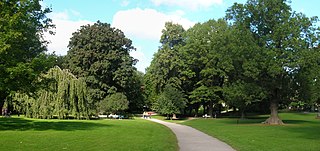 W
WIn Swedish and Finnish history, the Age of Liberty is a half-century of parliamentary governance, increasing civil rights and decline of the Swedish Empire that began with Charles XII's death in 1718 and ended with Gustav III's self-coup in 1772. The shift of power from monarch to parliament was a direct effect of the Great Northern War, which was disastrous for Sweden.
 W
WThe Anjala conspiracy of 1788 was a scheme by disgruntled Swedish officers to end Gustav III's Russian War of 1788–90. Declaring Finland an independent state was not a part of the original plot, but one of the conspirators Johan Anders Jägerhorn, who handed the note to Empress Catherine the Great, made such claims in Saint Petersburg.
 W
WThe History of Sweden from 1772 through 1809 is better known as the Gustavian era of Kings Gustav III and Gustav IV, as well as the reign of King Charles XIII of Sweden.
 W
WThe History of Sweden from 1772 through 1809 is better known as the Gustavian era of Kings Gustav III and Gustav IV, as well as the reign of King Charles XIII of Sweden.
 W
WThe Siege of Viborg took place in the spring of 1710 during the Great Northern War (1700–1721), as a second attempt by the Russians to capture the fortress port of Viborg (Vyborg), near the modern border between Russia and Finland, after a failed attempt in 1706. After the outbreak of the war, Swedish forces had fortified themselves in the port of Viborg. In order to assure safety for the newly founded city of Saint Petersburg, Peter the Great ordered the Swedish fort to be secured. A first unsuccessful attempt was made in 1706. Later plans were put on hold because of other ongoing conflicts but, after the Russian success at the Battle of Poltava in June 1709, the men and resources were available to capture the town.
 W
WThe Stenborg Company was a Swedish Theatre Company, active in Sweden and Finland in the 18th century. It was also called Stenborgska skådebanorna, Svenska komeditruppen and Svenska Comedien ('Swedish Comedy') or Svenska Teatern. It is one of the most famous theatre troupes in its country's history. In the period of 1754–73, between the closure of the first national Swedish theatre in Bollhuset and the foundation of the next, The Royal Swedish Opera and the Royal Dramatic Theatre, it was the only Theatre performing in the native language in Stockholm. It also has an importance for the history of Finland, being the first professional secular theatre troupe in this country. It was a traveling troupe in 1756–80 and then housed in several buildings.
 W
WPetter Stenborg was a Swedish stage actor and theater director. He was the director of the Stenborg Company or Svenska Comoedi-truppen from 1758 onward and as such the director of the Humlegårdsteatern (1773–80) in Stockholm. Petter Stenborg played an important role in Swedish theater history: he was a member of the pioneer actors of the first Swedish national stage in Bollhuset, and as the leader of the Stenborg theatre company, one of only two professional Swedish language theater companies active in the mid 18th-century, he kept professional Swedish language theater alive from the closure of the public theater in Bollhuset in 1754, until the inauguration of the Royal Swedish Opera (1773) and Royal Dramatic Theatre (1788).
 W
WVrouw Maria was a Dutch wooden two-masted merchant ship carrying a valuable cargo of art objects, captained by Raymund Lourens, that sank on October 9, 1771, in the outer archipelago of the municipality of Nagu, Finland, 11 kilometers south-east of the island of Jurmo. In 1999, the ship was discovered by the members of Pro Vrouw Maria, led by Rauno Koivusaari. A dispute between the discoverers and the authorities was later resolved. The ship was in good condition when it was discovered, but only six objects from the deck of the ship have been salvaged. The cargo holds have not been disturbed, so the condition of any art on board remains unknown. The Finnish National Board of Antiquities is responsible for the ship and all recovery efforts.